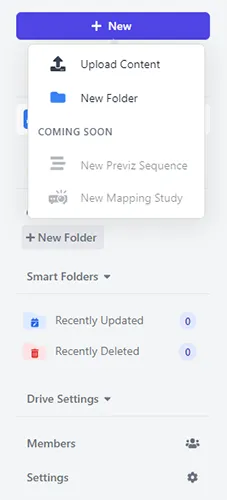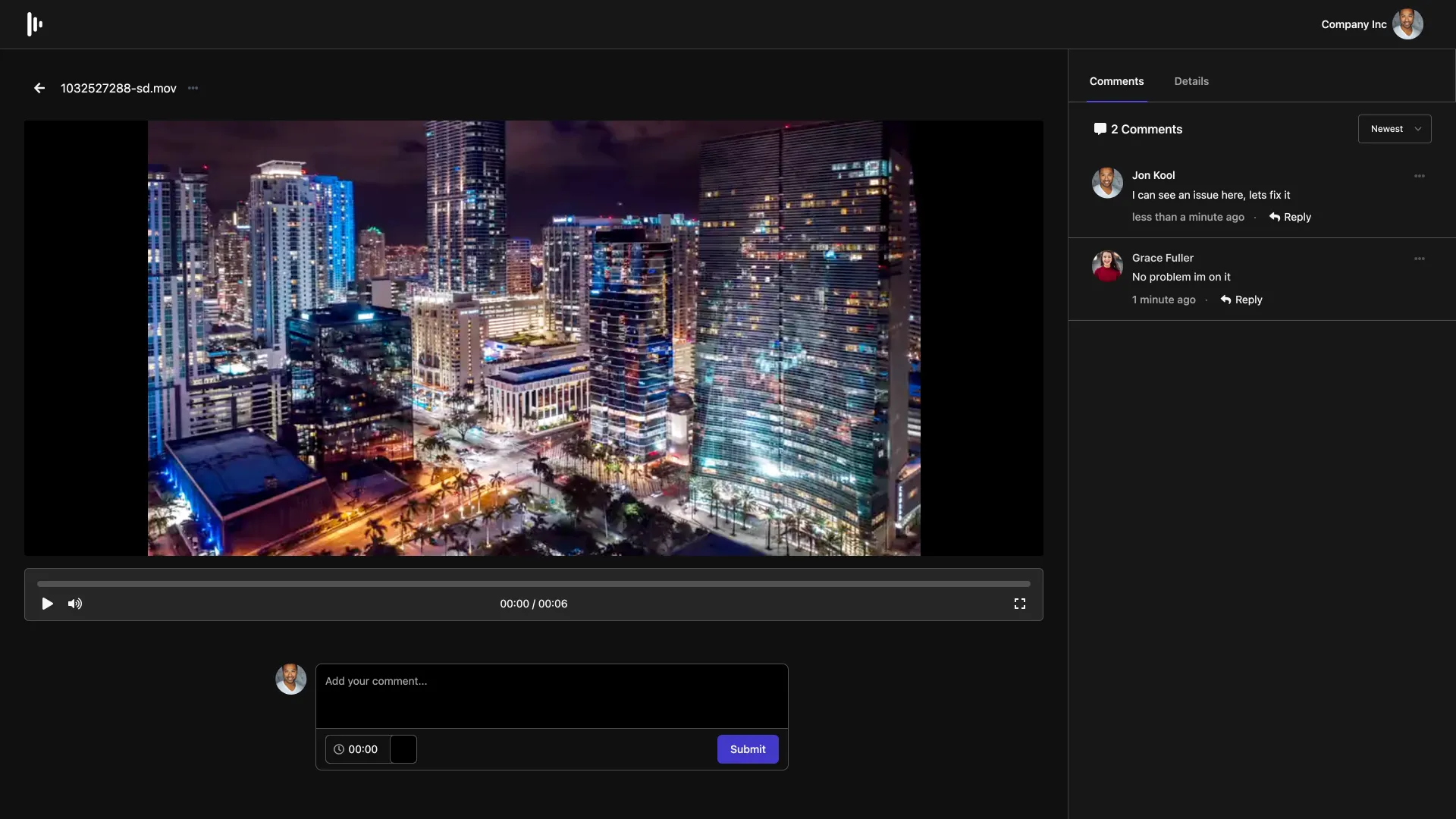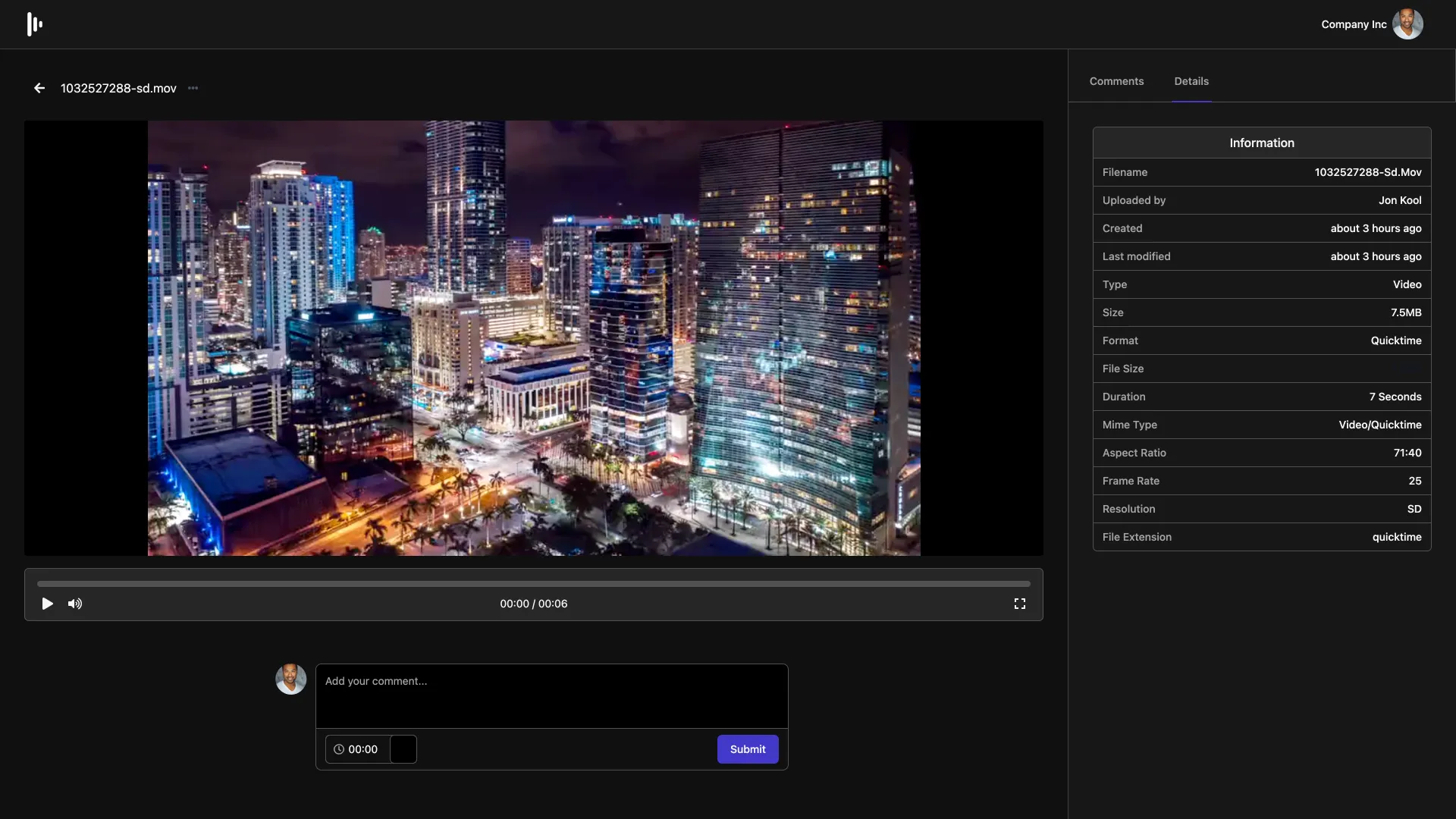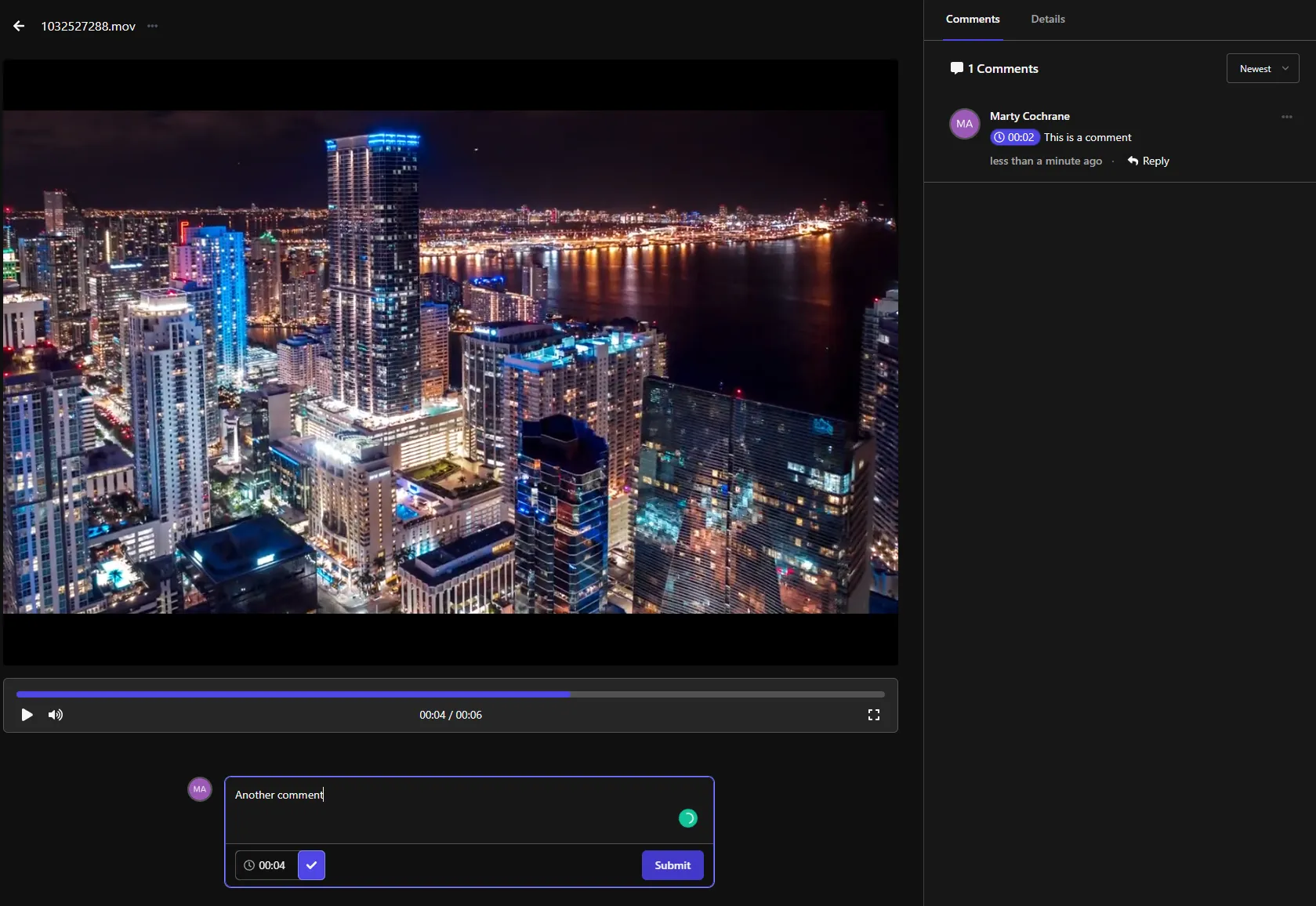Working with content
Supported file formats
Section titled “Supported file formats”The file formats currently supported in Disguise Drive are:
- Image: png, .jpg, .bmp, .webp, .gif
- Video: mp4, .mov, .ts,.avi, .y4m, .mkv
- Audio: .mp3, .wav
- 3D: .glb, .obj, .glTF, .fbx
Upload content
Section titled “Upload content”- From your Drive page, select the drive you want to use from the dropdown menu.
- Click on the + New icon and select Upload Content. This will allow you to browse your local files.
- Select the item you want to upload and click Open.
The item will upload and appear listed in your drive.
Alternatively, you can drag and drop a file or asset or several files from your computer into the main drive content area to upload to the current directory you are in.
You can also upload a folder that will upload all files within that folder along with any nested folders.

Preview content
Section titled “Preview content”To preview content, click on the item in drive view.
This will open a view of the item. Here, you can see any comments and details.
Leave a comment on an asset
Section titled “Leave a comment on an asset”- To leave a comment on an asset, click on the item name to view it.
- Then type on in the box below the item.
- Click Submit.

View the Metadata of an asset
Section titled “View the Metadata of an asset”- To view an asset’s Metadata, click on the item to preview it.
- Click on the details tab.

Add timestamped comments on a video
Section titled “Add timestamped comments on a video”In the comment box, you can change the timestamp by clicking on it and adjusting the time and frames.

Clicking on a timestamp will jump you to the point in the video where the comment was left so you can review the frame it relates to.

Download an asset
Section titled “Download an asset”- From your drive’s file list, click on the ”…” below OPTIONS.
- Click Download.
Delete an asset
Section titled “Delete an asset”- From your drive’s file list, click on the ”…” below OPTIONS.
- Click Delete.
Access recently deleted files
Section titled “Access recently deleted files”From your drive’s file list view, click on the Recently Deleted SMART FOLDER.
This will list all of the recently deleted files and folders.